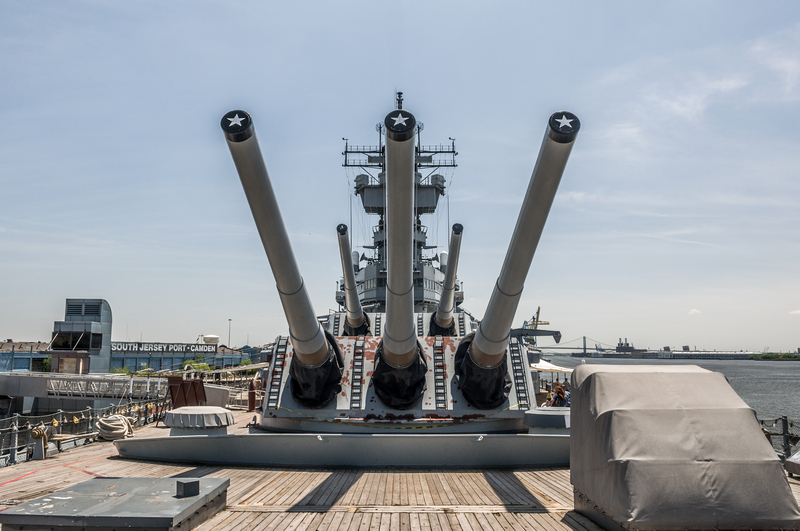CAMDEN, NJ – If you have ever been to the battleship U.S.S. New Jersey, you might have left wondering, “Why is there so much wood on a battleship?”
Ryan Semansky, Curator at the New Jersey Battleship Museum answered that question this week.
The use of wood on battleships, particularly on the USS New Jersey, reveals an evolving strategy in naval construction, balancing tradition with practicality and safety. Contrary to common belief, battleships like the USS New Jersey did incorporate wood, albeit in a more restrained and strategic manner than their wooden predecessors.
The USS New Jersey, known for its steel construction, surprisingly contains elements that mimic wooden aesthetics. For instance, the officer’s ward room features metal furniture hand-painted to resemble wood grain. This approach extended to other areas of the ship, including the captain’s cabin.
Historically, wood played a crucial role in shipbuilding, with entire vessels constructed from it. However, the transition from wood to steel didn’t completely eliminate the use of wood in ship interiors. Notable examples include the USS Monitor, America’s first ironclad warship, which still featured significant wooden elements internally.
The cruiser Olympia, advancing another 30 years, continued this trend, displaying a mix of wood and metal in its furnishings, particularly in the officers’ quarters. The use of wood persisted into World War II, but the attack on Pearl Harbor marked a turning point. The incident highlighted the vulnerability of wooden components to fire, prompting the US Navy to minimize flammable materials on ships.
Despite these changes, wood remained a practical choice for certain applications. Shoring timbers, used for damage control, were essential wooden items on the USS New Jersey. These timbers provided a quick, economical solution for temporary repairs during combat situations.
Another significant wooden feature was the teak deck. Teak was chosen for its lower flammability compared to other woods. However, not all US warships used teak; some, like World War II aircraft carriers, opted for softer, cheaper woods like fir. Older battleships even used pine.
Teak decks offered advantages beyond fire resistance. Their non-slip surface and superior insulation qualities were crucial for crew safety and comfort. Nevertheless, the introduction of fiberglass insulation and other modern materials eventually led to the phasing out of wooden decks in post-World War II naval design.
While the USS New Jersey and similar vessels transitioned away from wood in many aspects, wood’s historical significance and functional utility in naval architecture remain evident. Today, the ship’s preservation efforts continue, supported by the New Jersey Department of State and other contributors, ensuring that this blend of tradition and innovation endures as a testament to naval history.
